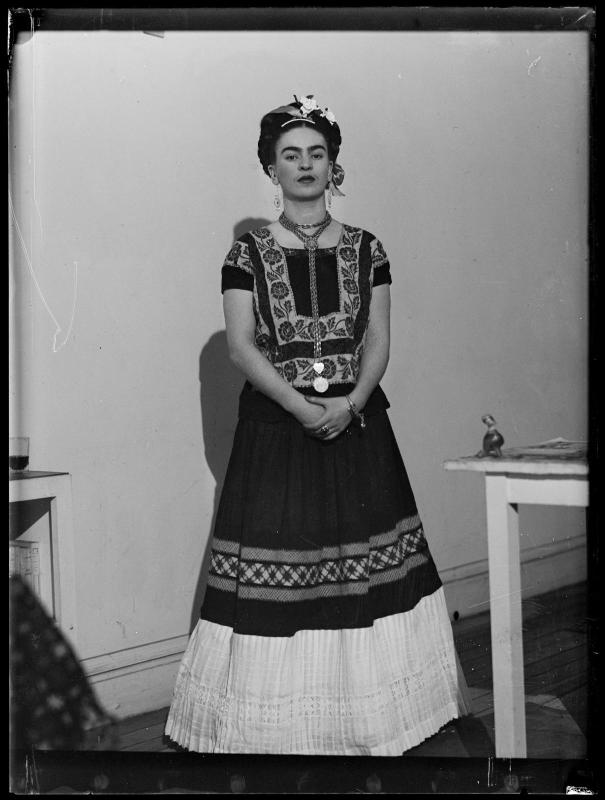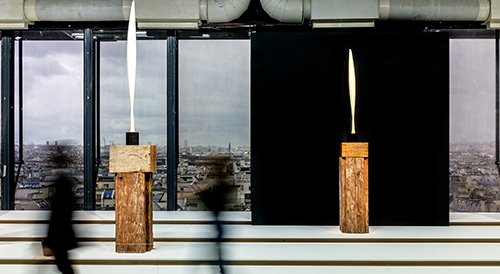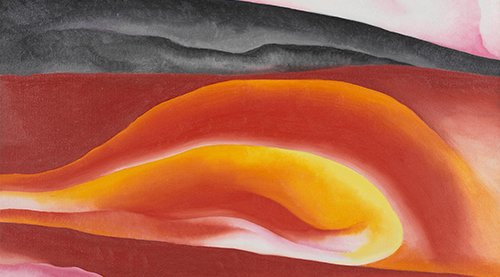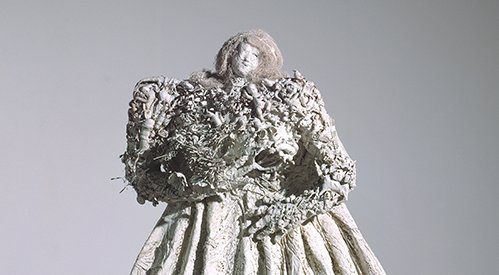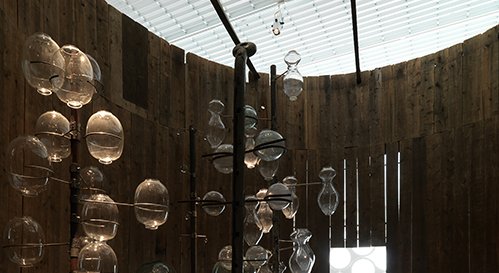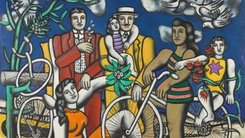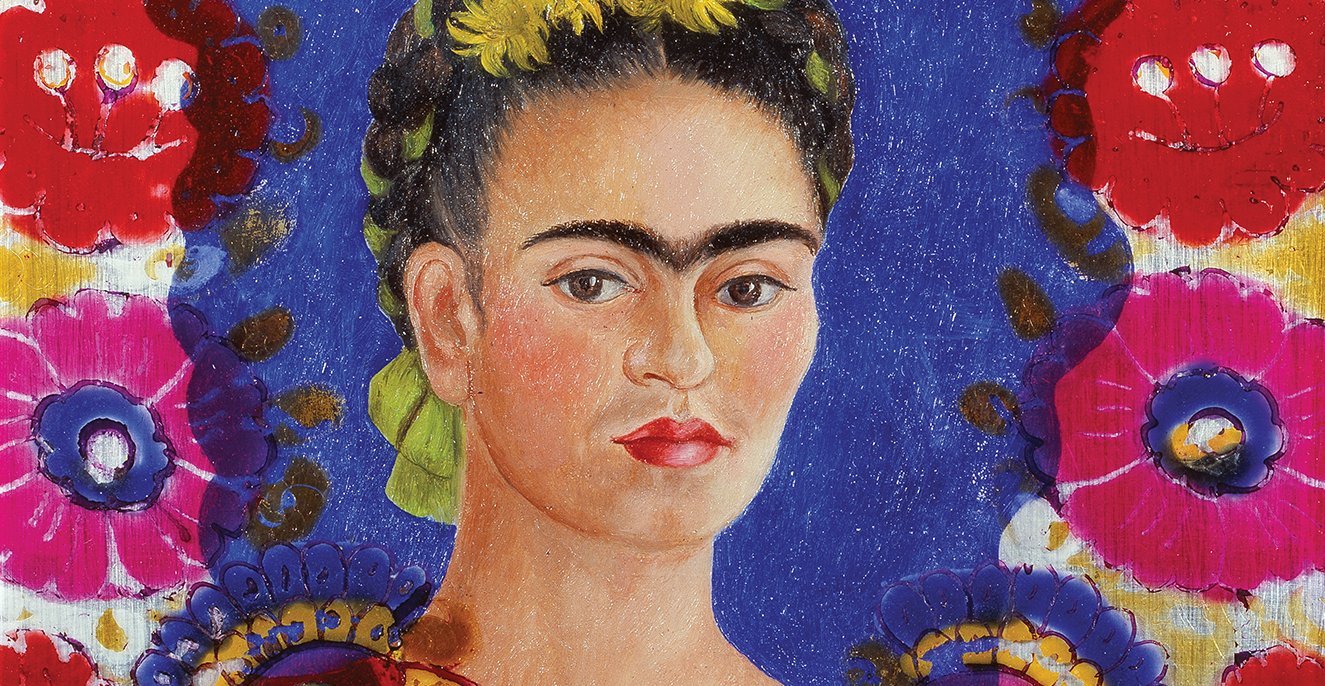
Focus on... Frida Kahlo’s “The Frame”
Frida Kahlo purchased this small glass frame at the market in the village of Juquila, in the state of Oaxaca, Mexico. It is adorned with birds, a traditional motif in Mexican folklore. Kahlo slipped a self-portrait painted on a sheet of aluminium inside. The picture is fairly small, measuring barely 30 centimetres long. The self-portrait has been painted on a fine sheet of scratched aluminium, placing her face at the centre of the glass plate produced by Mexican artisans, intended as a frame for a mirror, photographic portrait or religious icon. The artist’s face seems to pierce through the luxuriant décor, the exuberant colours and ornamentation of which were typical of the pre-Colombian objects and accessories that were staple features of Frida Kahlo’s world.
In January 1939, Frida Kahlo was invited by André Breton and the Surrealists to Paris, to present 18 small-format pictures in the collective exhibition “Mexico”. Her fans included Pablo Picasso, Marcel Duchamp and Max Ernst. The Frame was the only picture she managed to sell.
Born Magdalena Frida Carmen Kahlo Calderón, Frida Kahlo is one of the best-known women artists from the 20th century. Her fiercely personal style was fuelled by her physical suffering and passionate love affairs, and drew on the popular imagery of her home country similarly to religious representations. Deeply moved by the socialist revolution, and nurtured by Mexican and pre-Colombian culture, Frida Kahlo bequeathed a rich body of work, including some 50 portraits. Bodily suffering was one of many recurring motifs in Kahlo’s work, further to an accident at the age of 18 when the bus she was riding in was hit by a tram. She survived, but her body was impaled by a metal rod. She had to wear a plaster corset, and was unable to bear children. Since she was bed-ridden for several months, her parents encouraged her to paint. She produced a string of self-portraits using a makeshift easel and an ingenious system of mirrors placed above her bed.
Three years after her accident, Frida met Diego Rivera. Twenty years her senior, he was already well-known as a painter. As a committed communist, he had experienced major social revolutions of the century (Russian and Zapatist), and was friends with Leon Trotsky, Guillaume Apollinaire and Auguste Rodin. He was impressed and encouraged her artistic career. They married in 1929, divorced in 1939, only to remarry a year later. Frida Kahlo underwent several operations, including an amputation of her left leg below the knee, and died in the night of 13 July 1954, further to a serious bout of pneumonia. “Espero alegre la salida y espero nunca volver.” (“I hope the exit is joyful, and I hope never to return”) were the last words she was to write.
Since her death, Frida Kahlo’s influence has continued to grow. She is considered a pioneer of feminism. In 2002, Hollywood devoted a biopic to her, Frida, starring Salma Hayek in the title role.
Related articles
In the calendar
Frida Kahlo, The Frame (Le cadre), 1938 (détail)
Huile sur aluminium, 28,5 × 20,7 cm
© Service de la documentation photographique du MNAM - Centre Pompidou / Dist. Rmn-Gp
© Banco de México Diego Rivera Frida Kahlo Museums Trust, Mexico, D.F.

